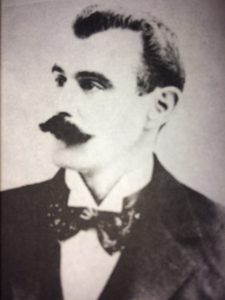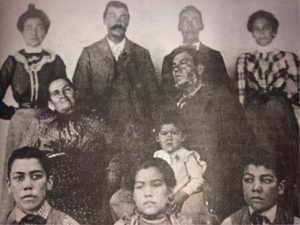The following article is from the book “Portrait of a Community –– Ojai: Yesterdays and Todays” by Ellen Malino James. It is reprinted here with the permission of the publisher, Ojai Valley News.
THE SPANISH SETTLERS
By Ellen Malino James
For services performed in the Buenaventura Mission, Fernando Tico obtained Rancho Ojay in 1837 as a land grant from the Mexican government which had only a few years before secularized the missions and all the lands held by the church. Tico was born in San Francisco where his father, a native Catalonia, had come as a volunteer soldier for the King of Spain. In 1853, shortly after California was admitted to the Union, Tico sold his entire holdings in Ojai, some 18,000 acres, to speculators for a few thousand dollars.





The Spanish, who first came to this coast in the sixteenth century, discovered in Alta California a climate much like that of the Mediterranean, the land heavy with the grapevine and other fruit, flowers, and honey. Even after Mexico established a separate republic from Spain in the 1820s, the Spanish at Ventura continued to identify with the Californio, not the Mexico, experience. With Tico’s arrival in Ojai, this valley became a Spanish town, part of the California regional expression of rancho life. When the United States acquired California by war with Mexico in 1848, the Spanish character of the region remained unchanged until several years after the American Civil War in the 1860s when the first Anglo-Americans began to arrive in the territory in search of oil, land and other riches. Only then did the peoples who lived here for centuries before, find themselves cast as a minority.
Rancho Ojay took its name from a Chumash village which, if it can be translated into English at all, probably means month or lunar cycle, according to Ojai Art Center Director Cary Sterling who has studied Indian lore. Berkeley scholar James D. Hart, in A Companion to California (1978) accepts the view of virtually all experts that Ojai to the Chumash meant “moon.” Arthur E. Woolman in The Ojai Valley: Gateway to Health and Happiness (1956) calls Ojai the “Valley of the Moon,” but then suggests that Ojai means “nest.” Travel writers, boosters, and the town’s newspaper continued to use the words “moon” and “nest” interchangeably but, as time went on, preferred the metaphor of the nest. Commenting on this controversy, which never fails to arouse the interest of old-timers, departing school superintendent Albert Marley and his wife Jacque said recently: “Regardless of what the historians and other scholars may say about the meaning of the word ‘Ojai,’ we still like the notion that it means ‘Nest.’ We feel safe in ‘the nest’.”
Spanish settlers reported a pink glow lighting the surrounding mountains to the east. This “pink moment” is a reflection of the setting sun and remains one of the valley’s prime attractions.



My grandmother came to Ventura from ojai, after a big fire. She met my grandfather during the evacuation. He brought many through Santa Paula to Ventura in a horse and buggy. My grandmother would be 109. Trying to find out my history. Her maiden name was della trillo.
I have some old envelopes addressed to Rosa Tico in Ventura between 1907-1911. Then they are addressed to Rosa Yager. There is one to Chris Yager. Assuming she was part of this famous Tico family. Cannot find any info on her online .
Hi Eric ,Rosa Tico Yeager is Daughter of Jose Tico her uncle is Edward Tico. Mother is Maria Peralta. Son Is Robert Juan Brown Camarillo US Assistant Attorney Civil Division.